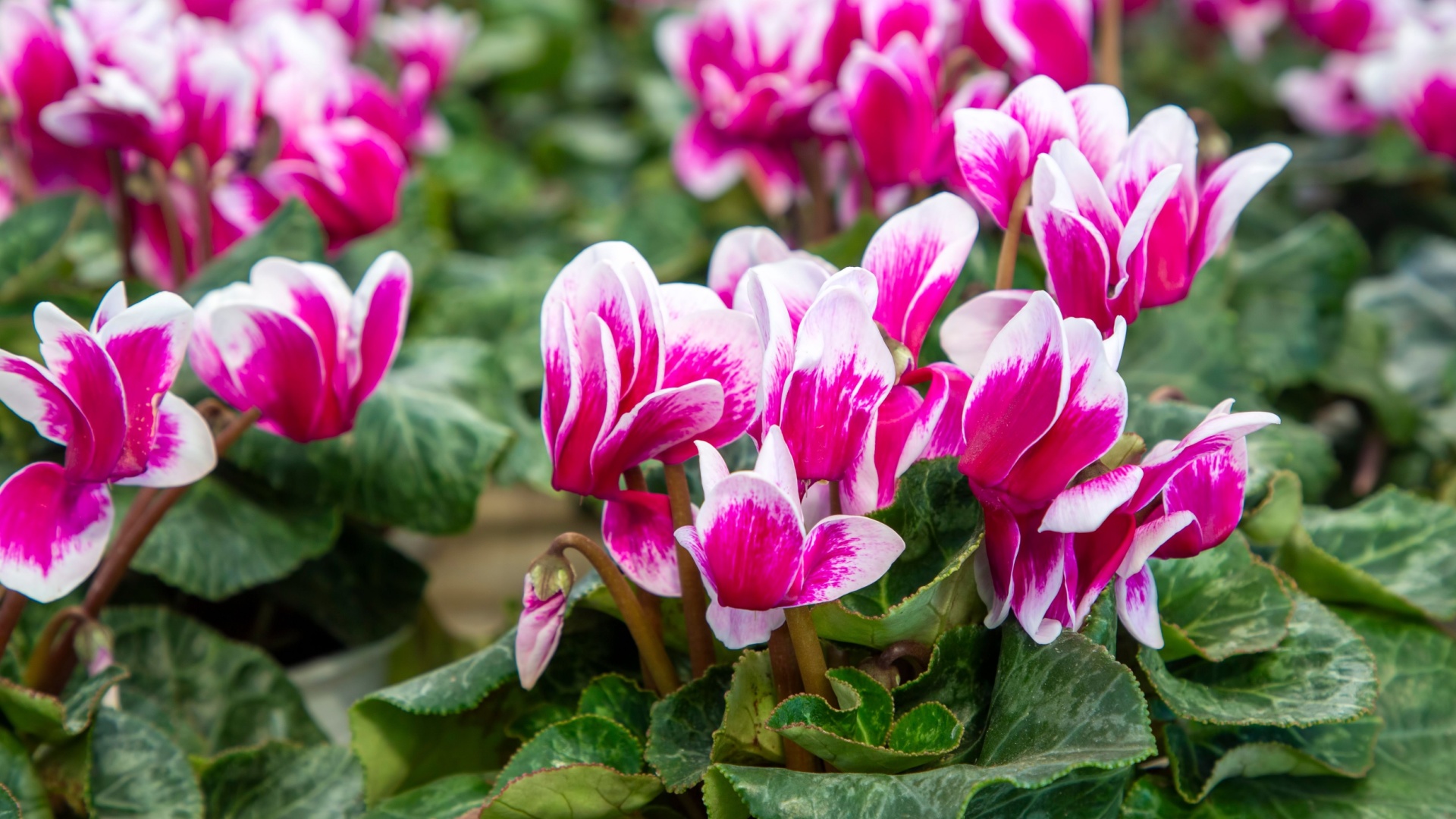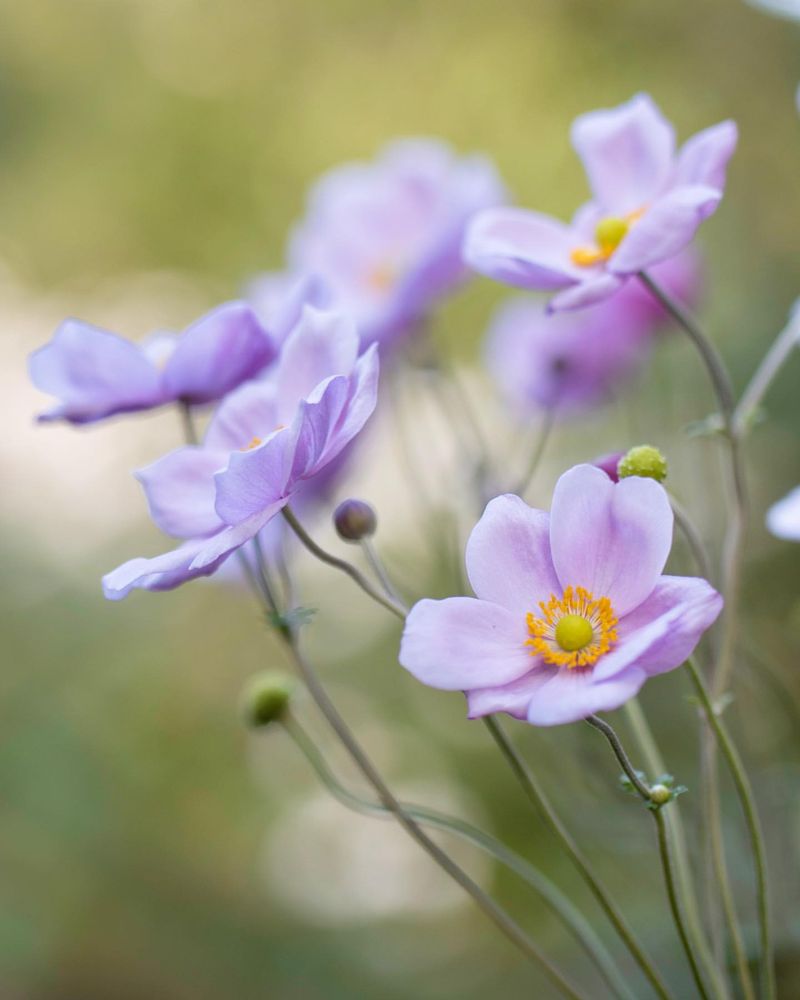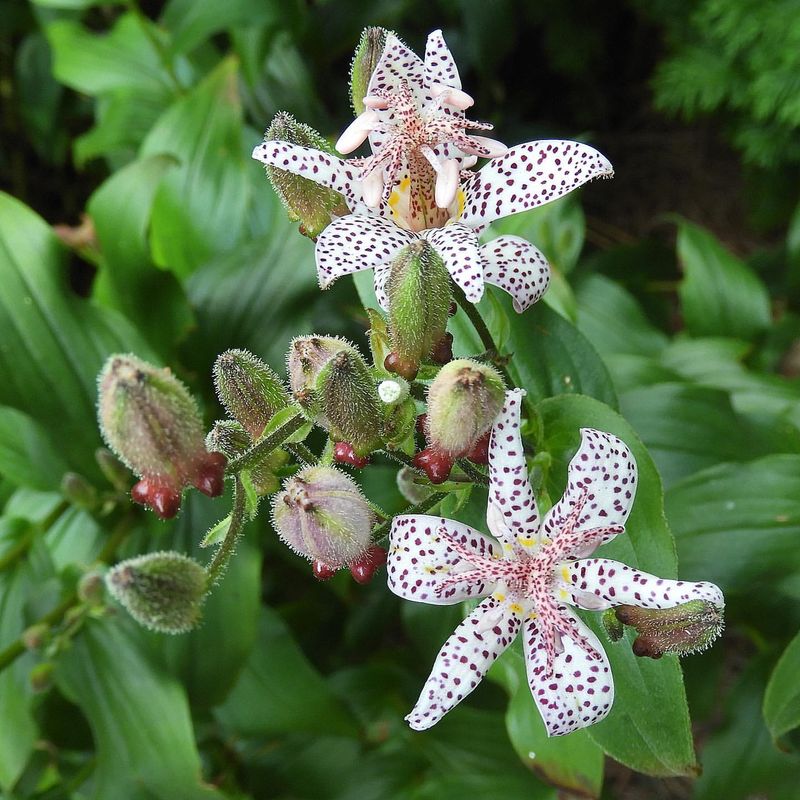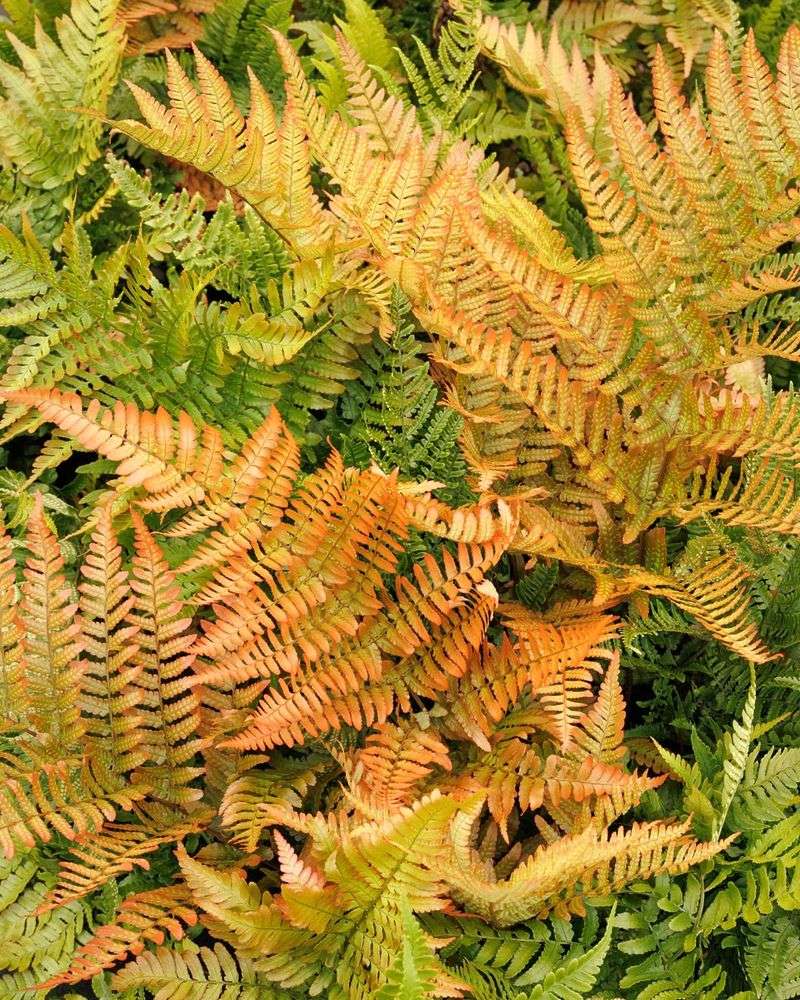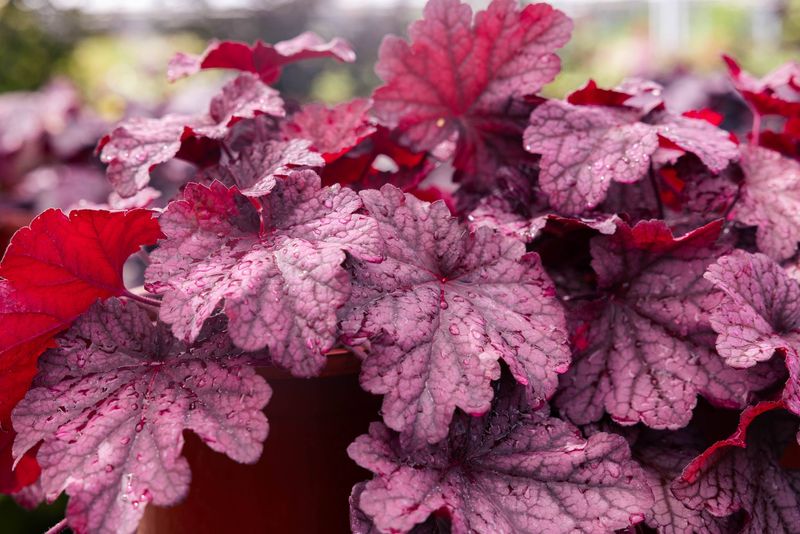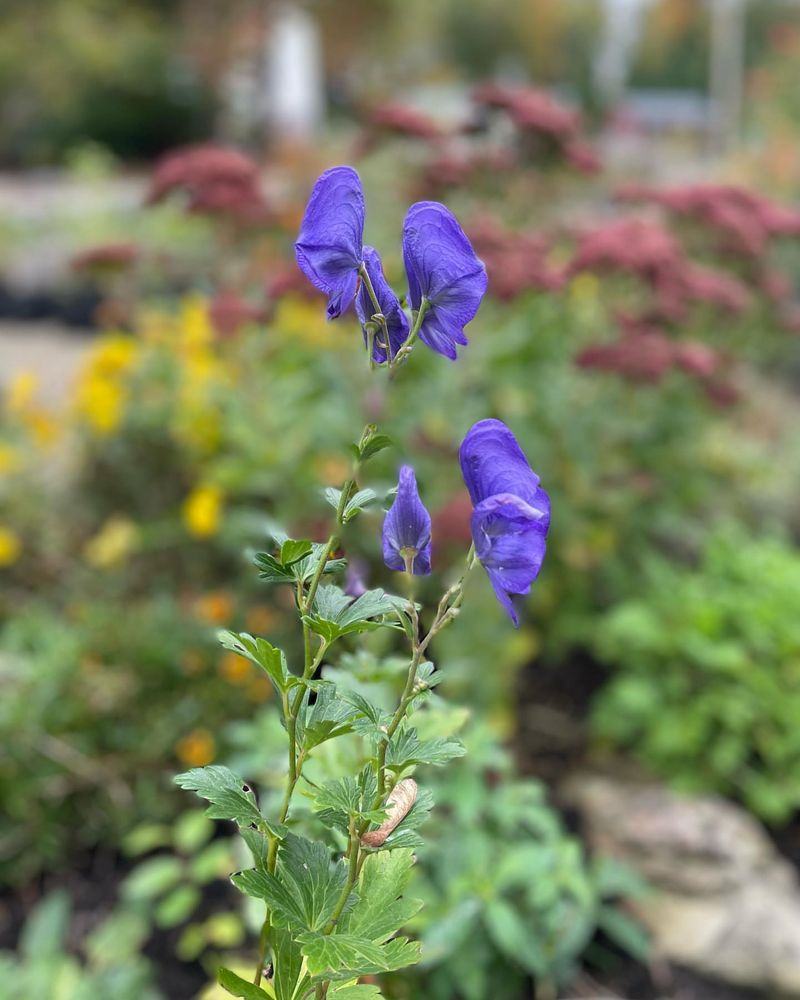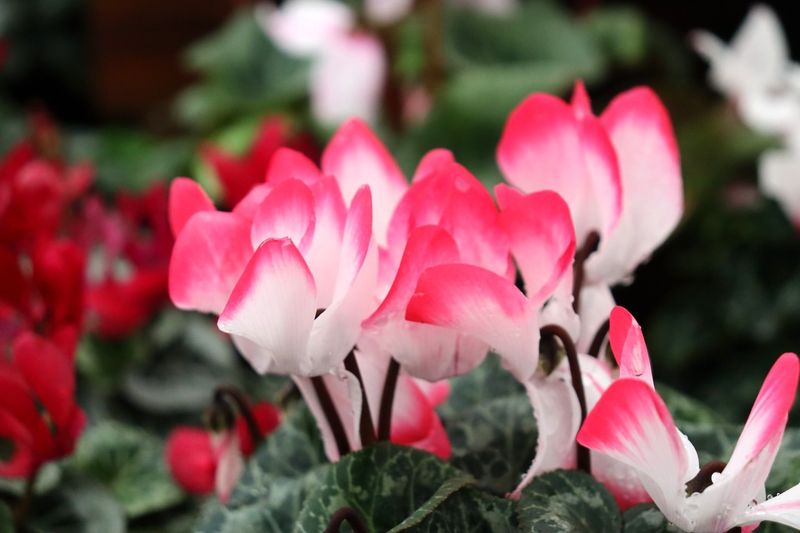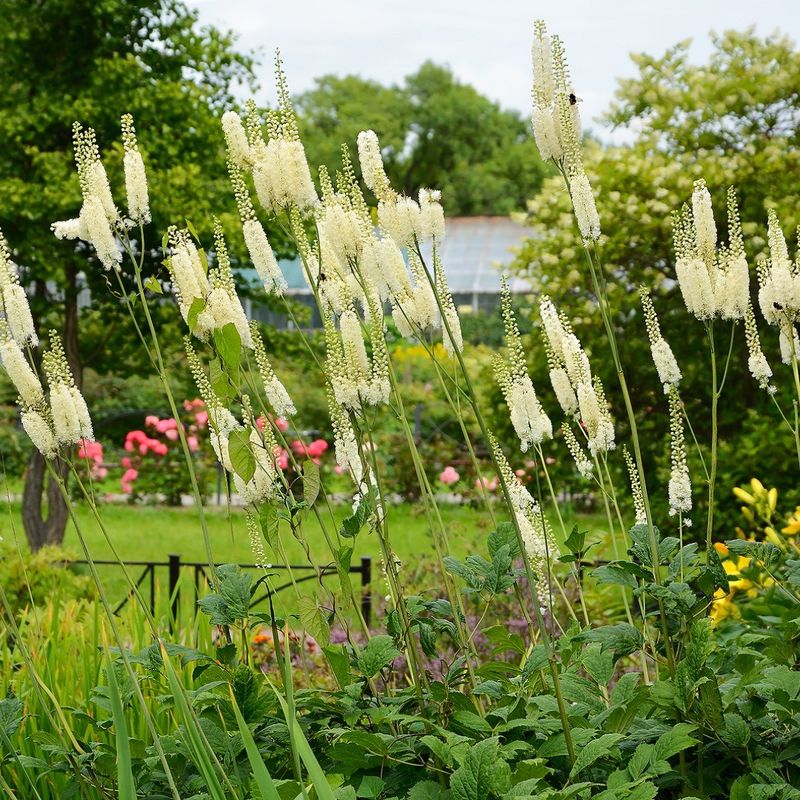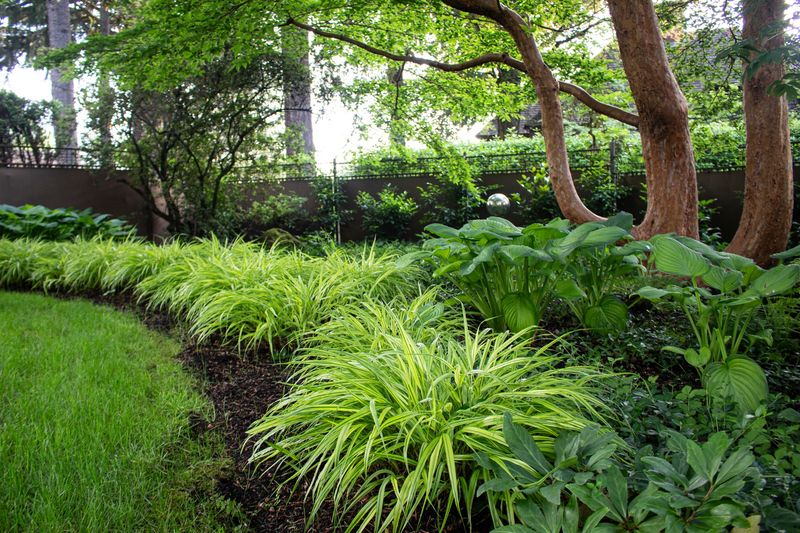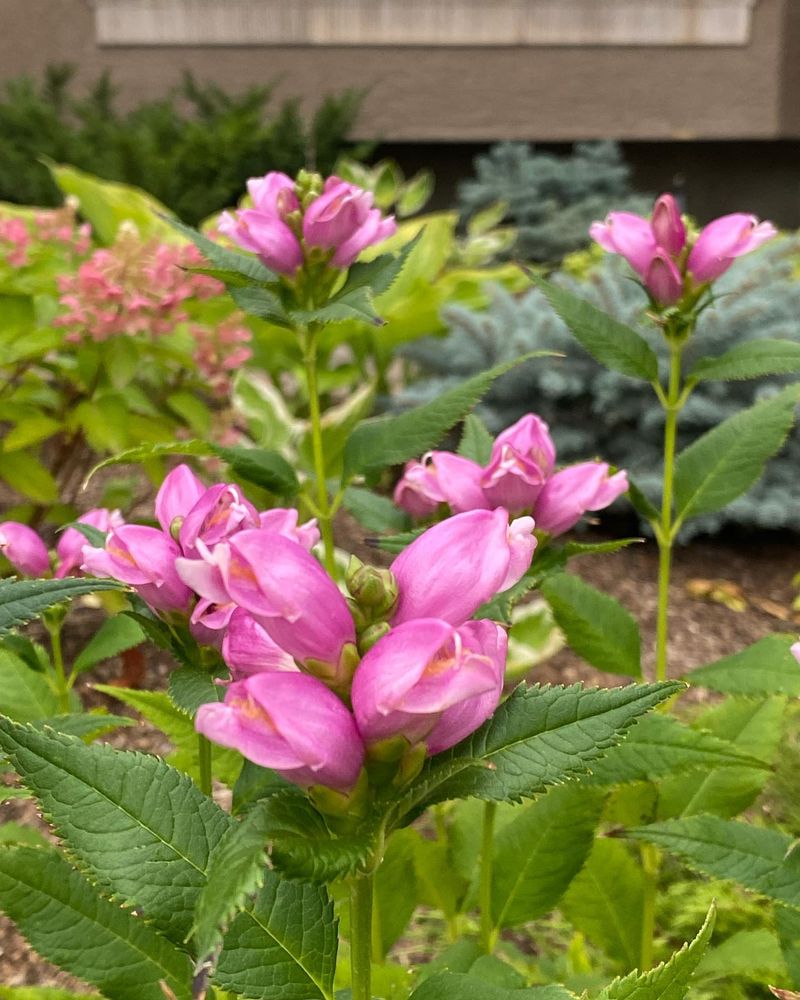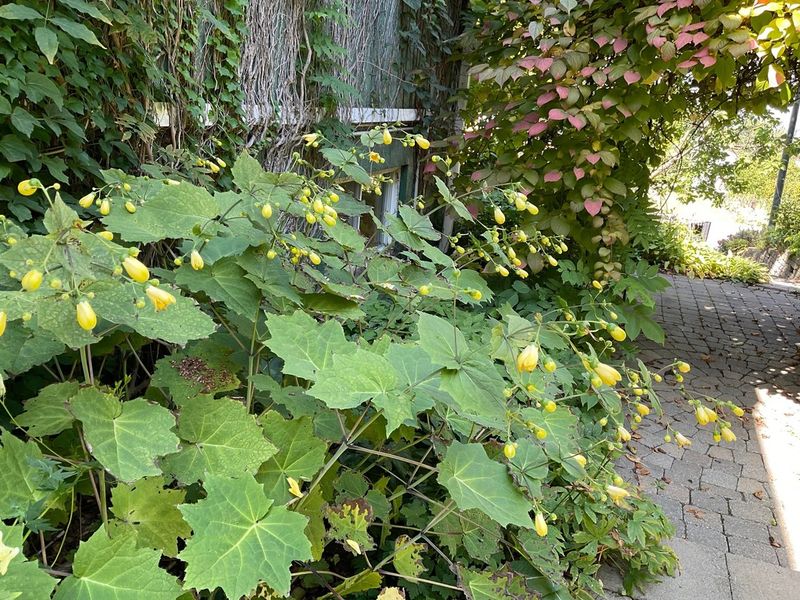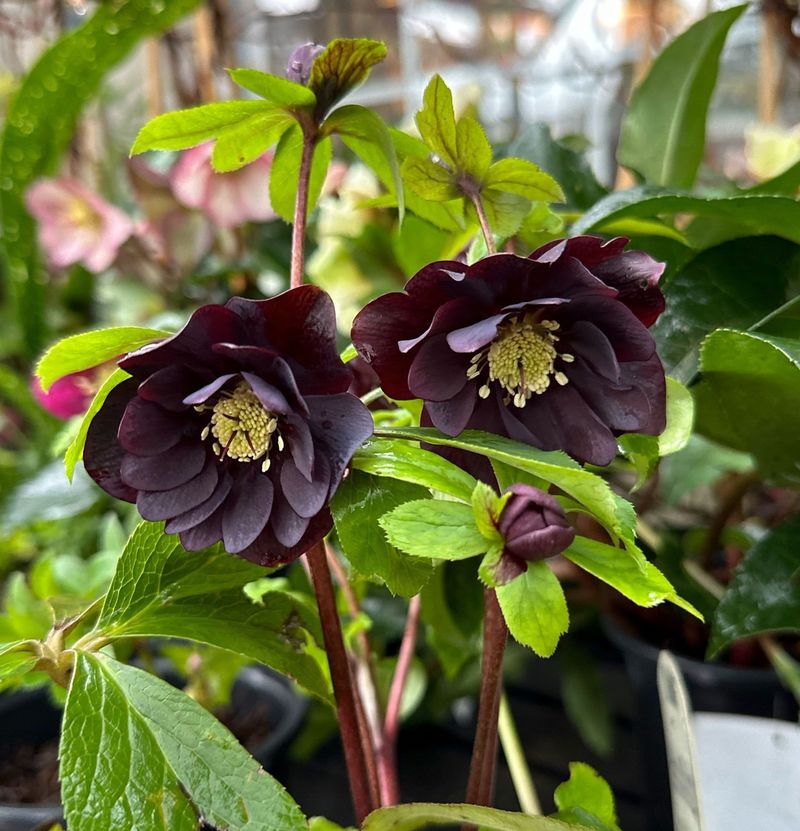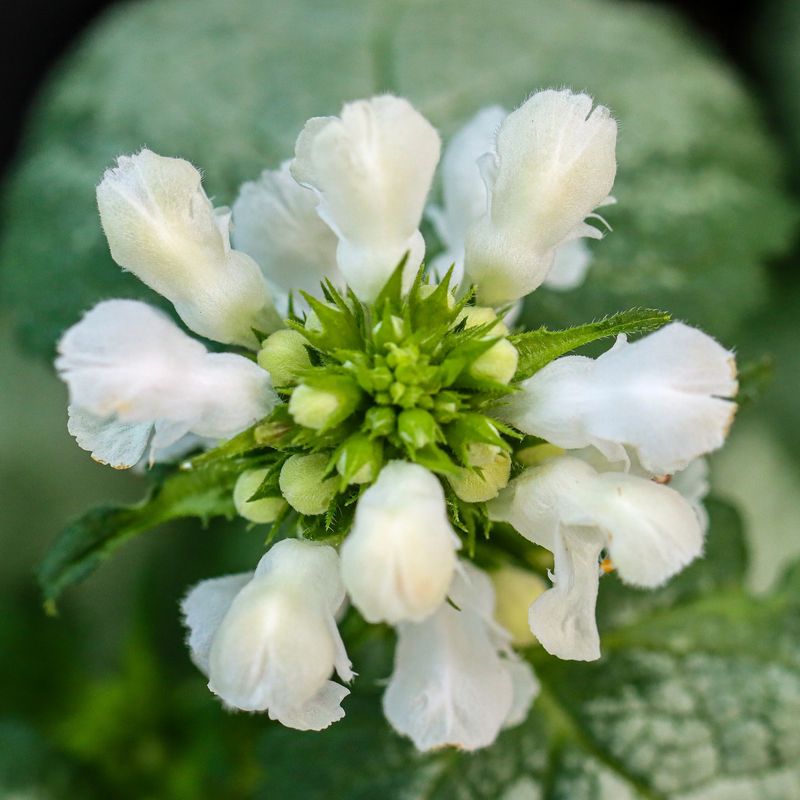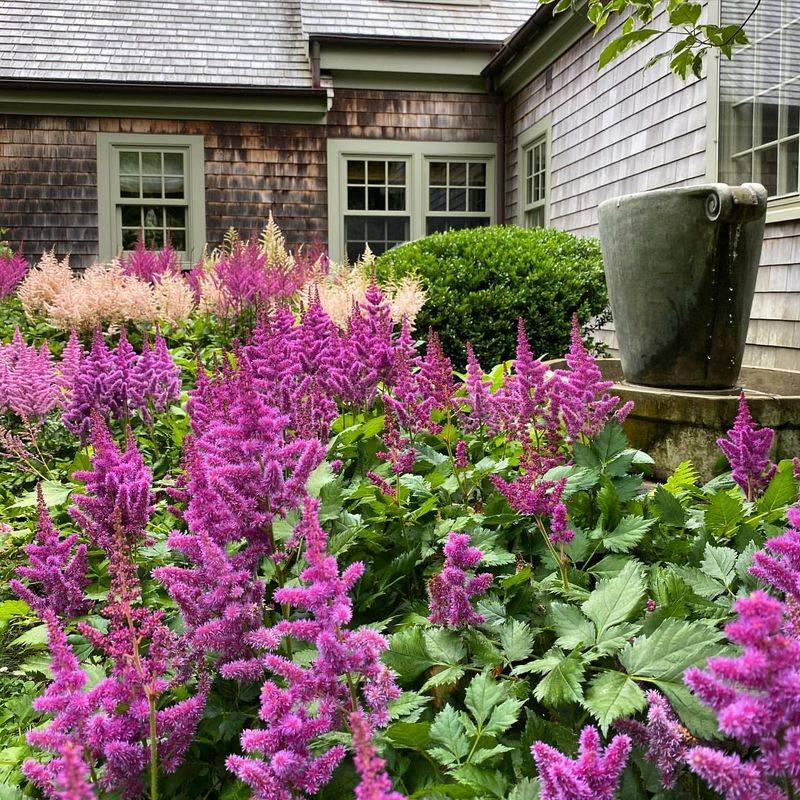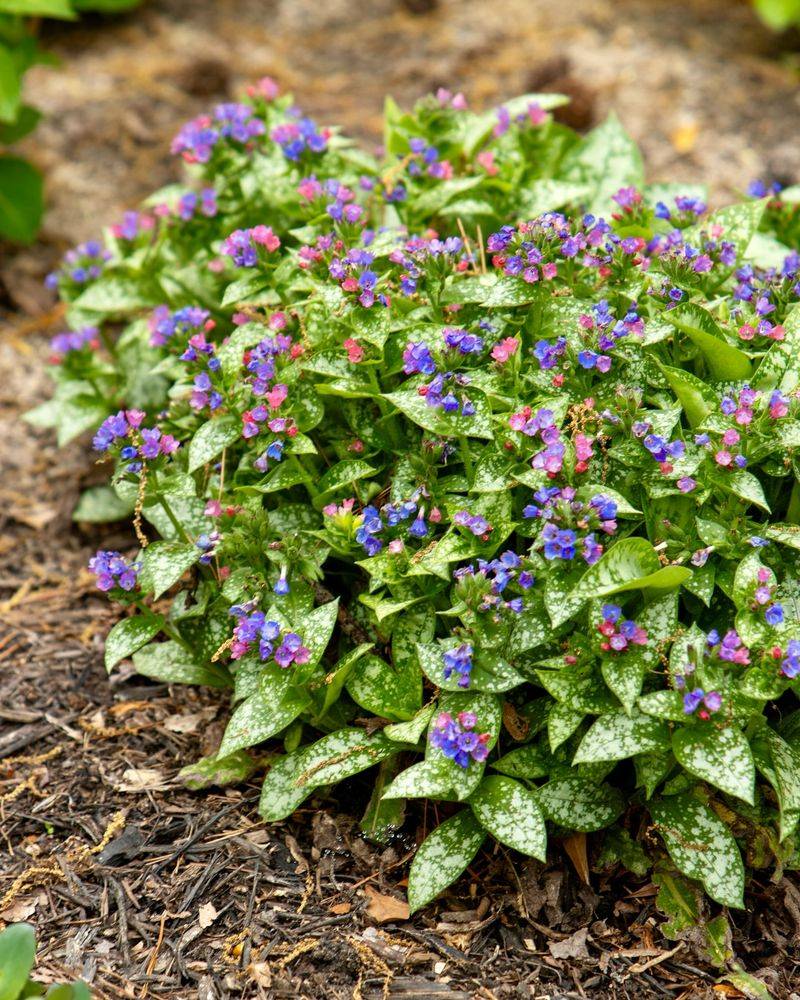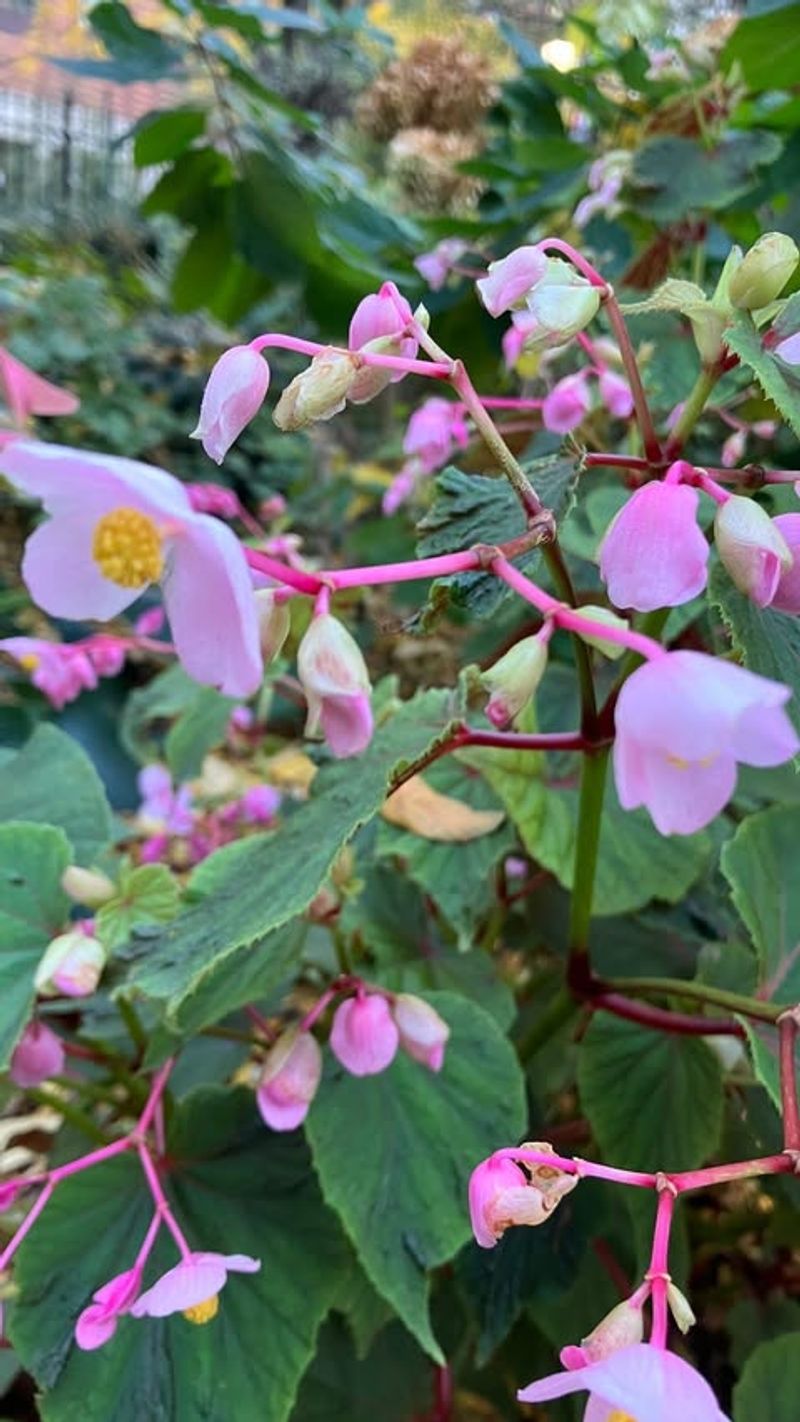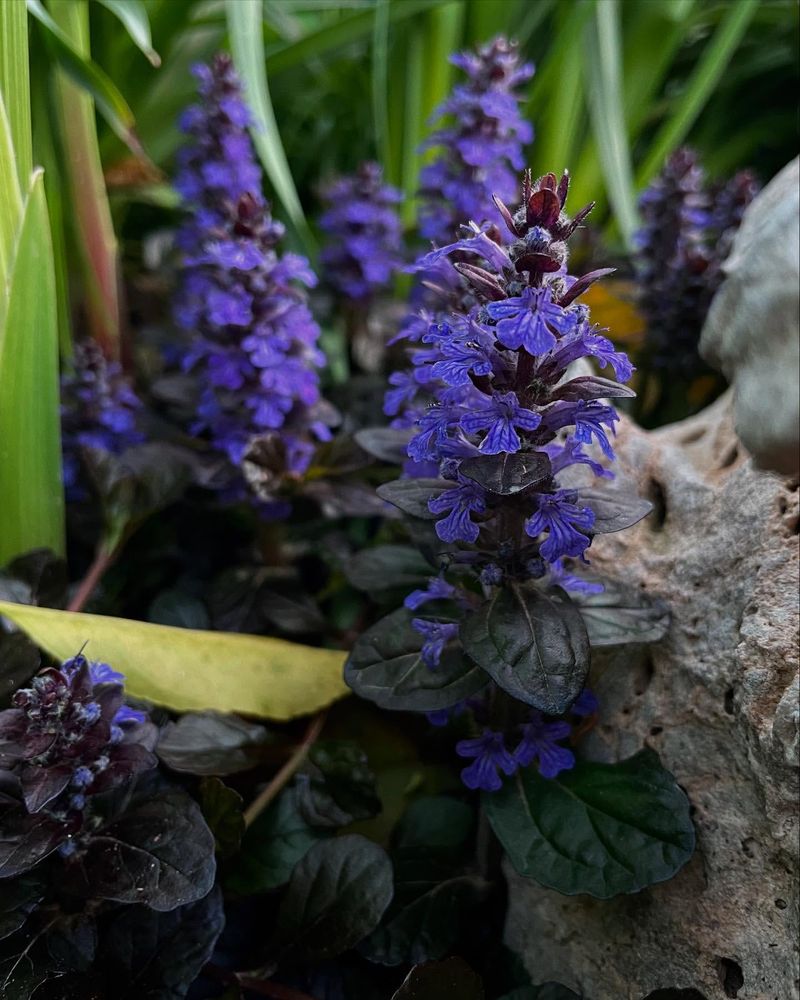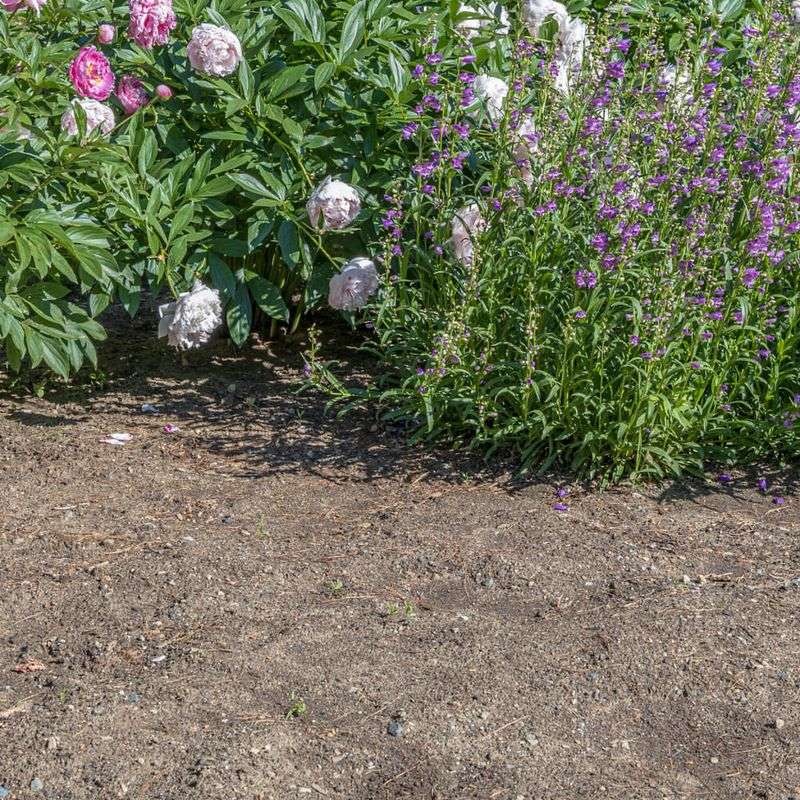Fall in New Hampshire brings spectacular colors to the landscape, but finding flowers that thrive in shady yards can be challenging. Many gardeners with tree-covered properties struggle to add autumn color to darker corners of their gardens.
Fortunately, several beautiful blooms actually prefer less sunlight and can handle New Hampshire’s cooling temperatures while providing vibrant fall displays.
1. Japanese Anemone
Pink and white blooms dance on tall, elegant stems from late summer through fall. These graceful perennials bring movement to woodland gardens when most other plants are finishing their show.
Japanese anemones prefer rich, moist soil but won’t tolerate standing water. Their height (2-3 feet) makes them perfect for the middle or back of shady borders.
Once established, they spread slowly to form beautiful colonies that return year after year.
2. Toad Lily
Spotted orchid-like flowers appear along arching stems just when other garden plants are fading. Their exotic appearance belies their hardiness in New Hampshire’s climate.
Growing just 2-3 feet tall, toad lilies create a woodland feel with their unusual blooms. The distinctive purple spots on white or pink backgrounds catch visitors’ attention in shady spots.
Plant them where they can be appreciated up close, as their intricate details deserve careful observation.
3. Autumn Fern
Coppery-red new fronds emerge in spring, maturing to deep green before taking on bronze-red hues again in fall. Unlike typical flowers, these ferns provide texture and color through their foliage rather than blooms.
Extremely shade-tolerant, autumn ferns maintain their attractive appearance when many other plants have disappeared for the season. Their evergreen nature provides winter interest in New Hampshire gardens.
Plant them in groups for maximum impact in the darkest corners of your yard.
4. Coral Bells
Brilliant foliage in shades of purple, bronze, red, or caramel makes these perennials standouts in the shade garden. Small bell-shaped flowers appear on tall stems, but the colorful leaves are the main attraction.
Modern varieties have been bred specifically for enhanced fall color. ‘Caramel’, ‘Plum Pudding’, and ‘Palace Purple’ offer exceptional performance in New Hampshire’s climate.
Plant them in groups for a tapestry effect, or use as edging plants along woodland paths.
5. Monkshood
Striking blue-purple hooded flowers bloom in late fall when most gardens have lost their color. The unusual helmet-shaped blooms give this plant its common name.
Standing tall at 3-4 feet, monkshood makes a dramatic statement in the back of shady borders. Its deep color contrasts beautifully with autumn’s yellows and oranges.
Remember that all parts are poisonous, so wear gloves when handling and keep away from children and pets.
6. Hardy Cyclamen
Delicate butterfly-like flowers emerge directly from the soil in early fall, followed by attractive marbled foliage. These diminutive beauties bring unexpected color to the forest floor.
Hardy cyclamen thrive under deciduous trees where they receive winter and spring sunlight before the canopy fills in. Their tubers slowly multiply to form impressive colonies over the years.
Plant them near paths or seating areas where their subtle beauty can be appreciated during New Hampshire’s crisp autumn days.
7. Cimicifuga (Bugbane)
Bottlebrush-like white flower spires rise dramatically above dark foliage in late September through October. Their sweet fragrance attracts late-season pollinators to the garden.
Modern varieties like ‘Hillside Black Beauty’ and ‘Brunette’ feature purple-black foliage that creates striking contrast in shady areas. These tall perennials (4-6 feet) make excellent background plants.
Give them rich, moist soil and they’ll reward you with reliable fall blooms year after year.
8. Japanese Forest Grass
Cascading golden-striped foliage turns copper and burgundy as temperatures drop in fall. Unlike most ornamental grasses that need full sun, this variety thrives in shade.
The arching habit creates movement and catches light beautifully in dappled shade. Growing just 12-18 inches tall, it makes an excellent ground cover or edging plant.
Japanese forest grass pairs wonderfully with blue or purple fall bloomers, creating a striking color combination in shady New Hampshire gardens.
9. Turtlehead
Rows of pink snapdragon-like flowers bloom on sturdy stems from late summer into fall. Native to eastern North America, turtleheads are perfectly adapted to New Hampshire’s climate and soils.
Their common name comes from the flower shape, which resembles a turtle’s head with its mouth open. Growing 2-3 feet tall, they naturalize beautifully in moist, shady areas.
Butterflies and hummingbirds are attracted to these reliable bloomers when many other nectar sources have disappeared.
10. Kirengeshoma (Yellow Waxbells)
Waxy yellow bell-shaped flowers dangle from purple-tinged stems in September and October. The maple-like leaves turn soft yellow before dropping, adding to the fall display.
This uncommon woodland perennial deserves wider use in New Hampshire gardens. Growing 3-4 feet tall and wide, it creates a shrub-like presence in the shade garden.
Plant it where its architectural qualities can be appreciated, perhaps as a focal point in a woodland setting.
11. Hellebore
Leathery evergreen foliage looks fresh all season, providing structure long after other perennials have disappeared. Though primarily spring bloomers, their foliage turns burgundy-tinged in fall.
Modern varieties offer improved cold hardiness perfect for New Hampshire gardens. They thrive in the dappled shade of deciduous trees and gradually form impressive clumps.
Consider varieties like ‘Metallic Blue Lady’ or ‘Red Racer’ for enhanced fall foliage color in shady spots.
12. Lamium (Dead Nettle)
Silver-splashed foliage brightens dark corners and continues looking fresh through late fall. Some varieties produce a final flush of pink or purple flowers in autumn before winter sets in.
This low-growing ground cover (8-12 inches) spreads to form weed-suppressing mats in difficult shady areas. It’s particularly effective at covering bare spots under trees where grass won’t grow.
Varieties like ‘Beacon Silver’ and ‘White Nancy’ offer exceptional silver variegation that glows in shady New Hampshire gardens.
13. Astilbe
Feathery plumes in shades of pink, red, and white may have finished blooming, but their dried flower heads create striking fall interest. The fern-like foliage often develops rich burgundy tones as temperatures drop.
Astilbes prefer consistently moist soil but will tolerate average garden conditions once established. Their vertical form contrasts nicely with mounding shade plants.
Leave the dried flower heads standing for winter interest and cut back in early spring before new growth emerges.
14. Lungwort (Pulmonaria)
Spotted silver-white leaves maintain their color and freshness well into fall when many other perennials have faded. Some varieties develop rosy-pink tints as temperatures cool.
Growing just 12 inches tall, lungwort creates an attractive ground layer in woodland gardens. The speckled foliage brightens dark corners and provides excellent contrast to solid-colored plants.
Early-spring blue flowers are a bonus, but the foliage is the main attraction for fall interest in shady New Hampshire yards.
15. Hardy Begonia
Angel-wing shaped leaves with red undersides provide striking texture through fall. Clusters of pink flowers continue blooming until hard frost, often into November in sheltered locations.
Unlike their tender cousins, these begonias return reliably in New Hampshire gardens if given winter mulch. They prefer rich, moist soil in dappled shade and gradually form impressive colonies.
Plant them where water naturally collects in the landscape for best performance and longest bloom time.
16. Ajuga (Bugleweed)
Glossy evergreen foliage forms a dense carpet that suppresses weeds and prevents erosion on shady slopes. Many varieties develop enhanced purple, bronze, or burgundy coloration as temperatures drop.
This low-growing ground cover (4-6 inches) spreads steadily to fill difficult spaces under trees. ‘Black Scallop’ and ‘Burgundy Glow’ offer particularly rich fall color in New Hampshire gardens.
The textured leaves catch morning frost in beautiful patterns, extending seasonal interest well into late autumn.
17. Epimedium (Barrenwort)
Heart-shaped leaves develop stunning red, orange, and bronze edges as fall progresses. This tough ground cover thrives in dry shade where many other plants struggle.
Growing just 8-12 inches tall, epimediums create a weed-suppressing carpet under trees and shrubs. Their semi-evergreen nature provides structure through much of the winter in protected spots.
Varieties like ‘Amber Queen’ and ‘Fire Dragon’ offer exceptional fall color for New Hampshire’s shady gardens.

